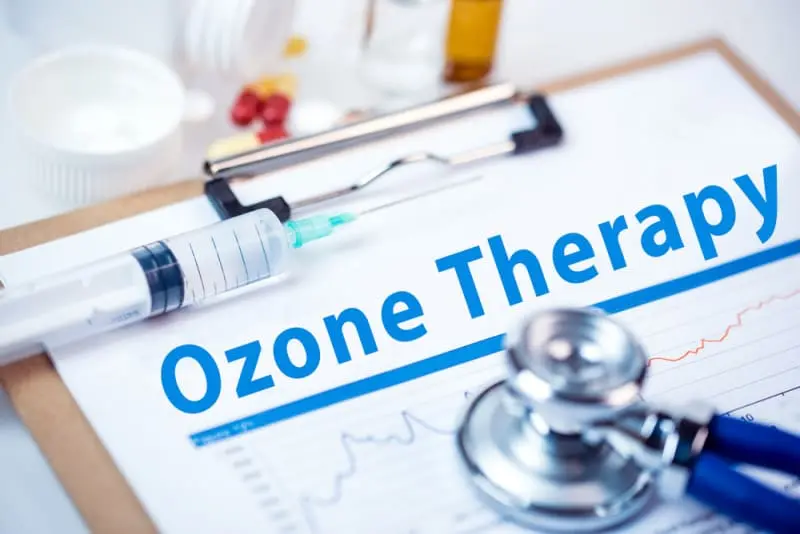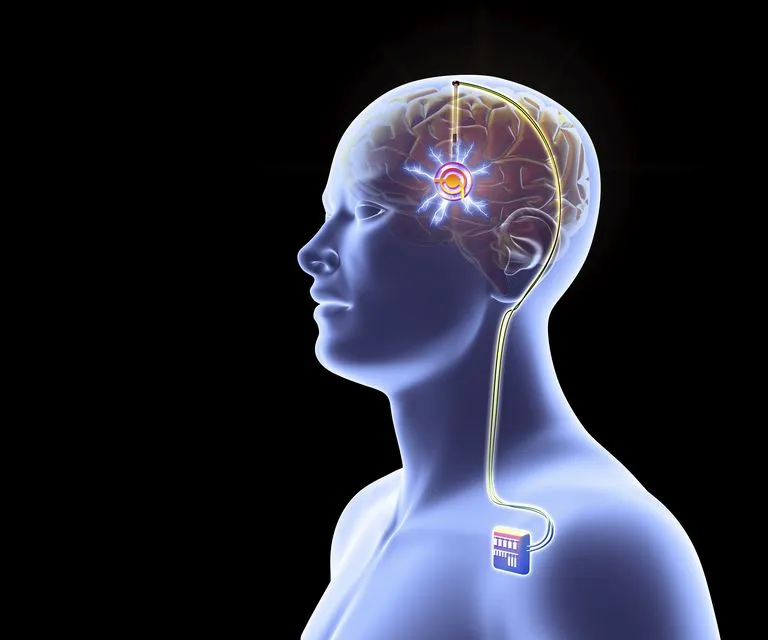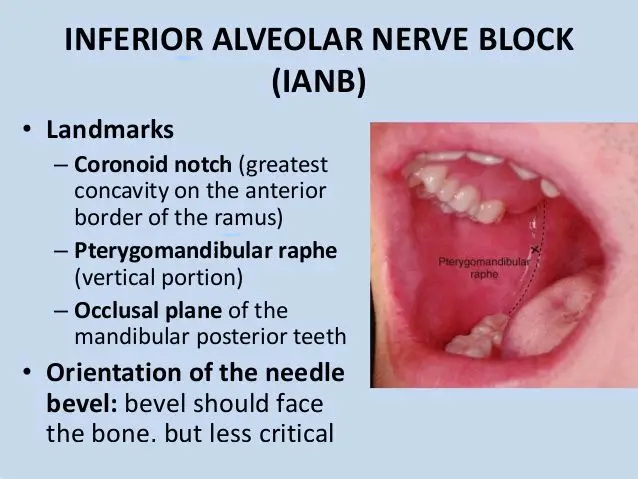Ozone Therapy
Introduction
Ozone therapy is a controversial alternative medicine approach that uses ozone gas to treat medical conditions. There isn’t enough information available right now to say if it’s safe or useful to use in medicine. One kind of oxygen is ozone therapy.
Ozone treatment is an alternative medicine technique wherein gas or liquid versions of ozone are used topically to cure illnesses and as a disinfectant.
For many years, ozone treatment has been used in medical settings. However, due to safety concerns, its usage is still debatable. The Food and Drug Administration (FDA) issued a warning regarding ozone treatment in 2019.
This is because there is not enough information to determine if it is safe or effective to use in medicine. An overview of ozone treatment is given in this article, along with information on its potential dangers and side effects as well as its suggested advantages of ozone therapy.
Toxins are often harmful to people. But is it feasible for a poison to provide health advantages if given properly? About ozone gas, scientists have been pondering that subject for more than a century. Three oxygen atoms make up the chemical molecule known as ozone (O3).
In a liquid or solid state, it is extremely unstable and explosive. However, this supercharged oxygen may have medicinal properties as a gas. An alternative medical procedure called “ozone therapy” involves introducing ozone or ozonides into the body.
“In any medical condition for which there is no proof of safety and effectiveness,” according to the US Food and Drug Administration (FDA), “ozone is a toxic gas with no recognized beneficial medicinal use in particular, supplemental, or prophylactic treatment.”
The FDA forbids the use of ozone for any medical purpose. Ozone needs to be present at far higher concentrations than what humans and animals can safely tolerate in order for it to function as a germicide.”
The practice of selling ozone therapy as an untested cure for a variety of diseases, including cancer, has been called “pure quackery”. Serious side effects from the treatment include death.
What Is Ozone Therapy?
Ozone gas is used in medical procedures known as “ozone therapy.” One kind of oxygen is ozone gas. This colorless gas is composed of three oxygen atoms. The high atmosphere has an ozone gas layer that protects Earth from solar radiation.
At ground level, however, ozone is classified as “a harmful air pollutant.” Ozone gas can irritate the throat and lungs, induce coughing, and worsen asthmatic symptoms when breathed. Overexposure can harm the lungs and be fatal.
On the other hand, some scientists think that ozone might be beneficial in some medical situations. According to a 2011 review, for instance.
Ozone treatment has been used for the following purposes:
- managing rheumatism
- combating viral illnesses like SARS and HIV
- cleaning wounds
- Immune system activation
- Ischemic heart disease treatment
- managing macular degeneration
- managing cancer
Presently, scientists are investigating how ozone treatment affects the human body in an effort to find any possible therapeutic advantages.
However, not much study has been done to determine the actual efficacy and safety of ozone treatment. Official organizations do not now approve of its use because of this.
Does It Work?
One paper from 2005 states that there is insufficient data to support the use of ozone treatment for heart disease, cancer, HIV or other infectious disorders, skin issues, or a variety of other ailments.
While ozone has demonstrated protection against the HIV virus outside the body, no studies have demonstrated the safety or efficacy of ozone on living individuals.
According to some studies, ozone treatment can reverse oxygen shortages in the body and modulate the immune system’s response, therefore combating diseases like cancer.
There have, however, been relatively few human studies of ozone treatment for any ailment, and no randomized controlled trials in cancer patients, according to Complementary and Alternative Medicine for Cancer (CAM Cancer).
“Any medical condition for which there is no proof of safety and effectiveness” is exempt from FDA authorization for ozone usage.
This implies that a great deal more study is required to ascertain the actual effects of ozone treatment on the human body and whether or not it offers any therapeutic advantages.
How It Works
For almost a century, medicinal ozone has been utilized to cure various ailments and sanitize medical equipment. It could also aid in shielding wounds from infection.
2018 research indicates that the processes that occur when ozone comes into touch with bodily fluids create more red blood cells and proteins.
As thus, your body will receive more oxygen. Additionally, ozone treatment may interfere with harmful bodily functions. Studies have demonstrated that ozone treatment can deactivate:
- microbe
- viruses
- mushrooms
- yeast
- protozoa
Is Ozone Treatment Secure?
While some studies indicate that ozone treatment consistently produces positive and safe results, other sources claim that the data is insufficient to determine the therapy’s actual efficacy or safety.
The FDA released a statement in 2019 against the use of ozone as a medicinal treatment. They claim that ozone is a poisonous gas and that supportive or preventative medicine has no recognized uses for it.
According to the FDA, “for ozone to be effective as a protective agent, its concentration must be far higher than what humans and animals can safely tolerate.” With reference to its use as a disinfectant, “a germicide.”
There have been negative consequences of ozone therapy in the past, some of which were rather serious. “Instances, where direct intravenous ozone infusion has resulted in pulmonary embolism and death, have been reported,” states the website CAM-Cancer.
As stated in the 2005 paper, “Ozone therapy has been associated with case reports of air embolism, bloodborne infections, and bilateral visual field loss.
“Human health is harmed by ozone gas itself. When combined with nitrogen dioxide in smog, ozone exposure is linked to “a significant increase in the risk of death from respiratory diseases” and is known to have harmful effects on people’s lungs.
Slight exposure to ozone can cause irritation to the throat and lungs, which can lead to lung tissue damage, coughing, and shortness of breath.
Procedures
Ozone is a gas by nature. People can apply it topically, use ozonated water, inhale the gas, or utilize an ozone sauna, which involves bagging and exposing a body portion to ozone gas, as a medicinal method.
People must take care to ensure they never breathe in ozone since it irritates their respiratory systems.
A medical professional may combine a patient’s blood with ozone and inject it again during certain operations. This procedure is referred to as autohemotherapy. The safety of this technique has not been demonstrated by scientific investigations.
Side Effects
Ozone therapy side effects might differ according to the kind of treatment a patient receives. Ozone should never be breathed by humans. It can burn and result in headaches, nausea, vomiting, and coughing if it gets into the mouth, nose, or eyes.
Respiratory issues may arise from exposure that is more intense. Ozone treatment patients can get the Herxheimer response.
The person may get flu-like symptoms as a result, which might make them feel worse right away. In certain cases, ozone therapy treatments include gas inhalation.
When receiving ozone therapy through the rectum, a patient could feel as though they need to pass gas and have discomfort and cramps. These negative consequences pass quickly.
Summary
Ozone gas is used in the alternative medical technique known as “ozone therapy.” Due to questions about its efficacy and safety, it is divisive.
Presently, scientists are investigating how ozone treatment affects the human body in an effort to find any possible therapeutic advantages.
Humans are poisonous to ozone gas, and little study has been done to determine if ozone treatment is safe. Official organizations do not now endorse its use because of this.
See your doctor if you have any queries concerning ozone therapy or whether the course of treatment is best for you.
How To Give Ozone Treatment
Ozone gas may be administered in a few different ways, however breathing it in is not advised. Your lungs may become very irritated and flooded with fluid as a result. The following are safer ways to provide ozone therapy:
Putting It On Your Skin: either applying an ozone solution to your skin (typically for wound healing) or subjecting a portion of your body to ozone gas while covered in a protective covering (sometimes termed an ozone sauna).
taking in gas through your nose: usually through the vagina, rectum, or ears.
Mixing Your Blood With It: Through a procedure known as autohemotherapy, ozone gas may be dissolved in a sample of your blood and then reintroduced into your body via an IV.
Ingesting It: by the ingestion of trace quantities of ozone gas dissolved in water or oil.
Injecting It Into A Muscle In Your Body: with an injection of an oxygen and ozone combination.
Possible Advantages Of Ozone Treatment For Health: The research supporting the potential health advantages of ozone treatment is few and of low quality. Among them are:
Immune System Assistance: receiving ozone therapy strengthens and stimulates your immune system.
enhanced blood flow: as more oxygen gets to your tissues, organs, and cells.as more oxygen gets to your tissues, organs, and cells.
Defense Against Pathogens Such As Bacteria, Viruses, And Fungi: by limiting their ability to develop and survive.
lessening Oxidative Stress
This can cause inflammation and chronic illness because of an imbalance between antioxidants that protect cells and free radicals that damage them.
“Ozone therapy has antioxidant and anti-inflammatory effects.” Any form of inflammation, whether it be from a wound or a result of a medical condition like arthritis or diabetes.
May be treated with it.” To ascertain the safety and possible applications of ozone treatment, research is still in progress. However, it has been researched for ailments like:
- respiratory disorders such as chronic obstructive pulmonary disease, or COPD.
- Cancer.
- Diabetes.
- Myalgia.
- Immunological conditions like HIV (human immunodeficiency virus).
- musculoskeletal conditions, such as carpal tunnel syndrome or disk herniation.
Risks And Adverse Effects Of Ozone Treatment
Ozone treatment is not currently regulated or approved by the FDA. As of right now, the potential health advantages are outweighed by the possible adverse effects.
The following are a few possible ozone treatment negative effects:
Air Embolism:
During IV ozone therapy, the formation of air bubbles may result in a blocked vein or artery and a potentially dangerous situation like a heart attack or stroke.
Soreness And Cramping:
When ozone gas is breathed into your body—typically through your rectum—these adverse consequences may manifest.
Herxheimer Response:
Ozone therapy eliminates germs and viruses and soothes inflammation, so you could feel a little flu-like.
Regulation And Ethics
The FDA prohibits the use of ozone for medical reasons “in any specific, adjunctive, or preventive therapy” since it is a poisonous gas with no recognized effective medical application. medical disease for which efficacy and safety have not been demonstrated.
Ozone needs to be present at significantly higher concentrations than what humans and animals can safely tolerate in order for it to function as a germicide.
Since 1991, the FDA has arrested and jailed a number of persons who pose as medical professionals, offer ozone therapy goods as a medical treatment, or run clinics that use ozone therapy to treat patients’ illnesses.
Similar incidents have also resulted in arrests in Uganda and Thailand, among other nations. In Germany, ozone therapy is marketed as a pricey alternative cancer treatment. The practice has been called “pure quackery” by David Gorski.
The German medical establishment has not authorized ozone treatment, despite the therapy’s supporters’ bogus claims that it is accepted there. Malaysia outlawed ozone treatment in 2017.
The Malaysian Health Ministry concluded that the procedure lacked scientific backing as a cure for any ailment and might result in significant damage.
Ozone treatment was deemed legal in Brazil on August 7, 2023, by the government overriding a request for a veto based on a lack of scientific proof made in The Brazilian National Academy of Medicine has sent an open letter.
FAQ
How much does ozone treatment cost?
Ozone treatment sessions can run anywhere from $100 to $300 on average, while some facilities offer bundle discounts for several sessions. Although intravenous ozone therapy is thought to be the most powerful and successful type of ozone therapy, its cost may be greater than that of other ozone therapy options.
How long does ozone therapy work?
Although ozone treatments can have long-lasting benefits, the effects of injected ozone remain active in the body for three to seven days.
Are ozone injections safe?
As stated in the 2005 paper, “Ozone therapy has been associated with case reports of air embolism, bloodborne infections, and bilateral visual field loss.” Human health is harmed by ozone gas itself.
Has anyone died from ozone therapy?
The practice of selling ozone therapy as an untested cure for a variety of diseases, including cancer, has been called “pure quackery”. Serious side effects from the treatment include death.
What to expect after ozone injection?
Redness, pain, or swelling at the injection site are possible adverse effects, but they will go away quickly. To minimize swelling and ease discomfort, apply ice to the affected region or use over-the-counter pain medicines as needed.
Does ozone therapy really work?
Ozone therapy is not approved by the FDA for use in medical treatment. According to this, ozone has “no known useful medical application.” Furthermore, there isn’t enough extensive, long-term research to fully comprehend all the negative consequences.
What not to do after ozone therapy?
Because vitamin C neutralizes ozone, you should avoid drinking any just before or right after your ozone treatment session. Prior to your treatment, make sure you have a healthy lunch and are well-hydrated. To find out more, contact your healthcare provider right now.







